Commodity inflation puts consumer goods giants’ hedging to the test
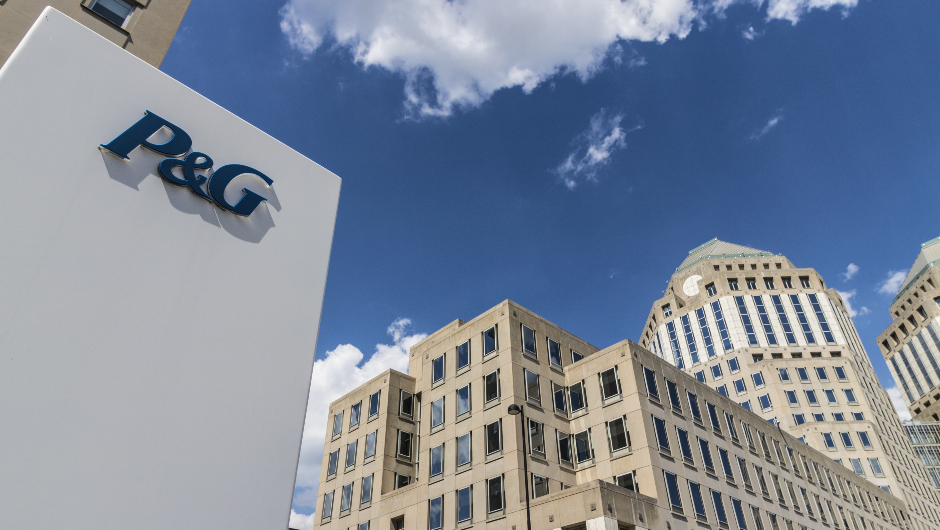
Treasurers at consumer goods multinationals have adopted divergent strategies for managing commodity risks. Facing a $4 billion spike in raw materials costs this quarter, companies like AB Inbev with extensive hedging are better placed than those that shun the practice like Procter & Gamble.
As the sharp rise in commodity prices continued into the first quarter of 2021, global consumer firms including Coca Cola, Unilever, Procter & Gamble, Nestle, Anheuser Busch InBev, Heineken and PepsiCo saw prices of raw materials including Palm Oil, Aluminium, Wheat and Plastic rise by double digits. This rapid rally in commodities resulted in the IMF primary commodities index touch a 7 year high, which is expected to increase the cost of raw material by $4.2 billion in the same period, according to an analysis by Eurofinance.
This pain will be cushioned for companies that hedged their commodity price risks. But those that didn’t are now passing the costs on to their customers. On 20th April, household goods giant Procter & Gamble, which shuns hedging, announced that it would be hiking the prices of goods such as nappies by high single-digit amounts.
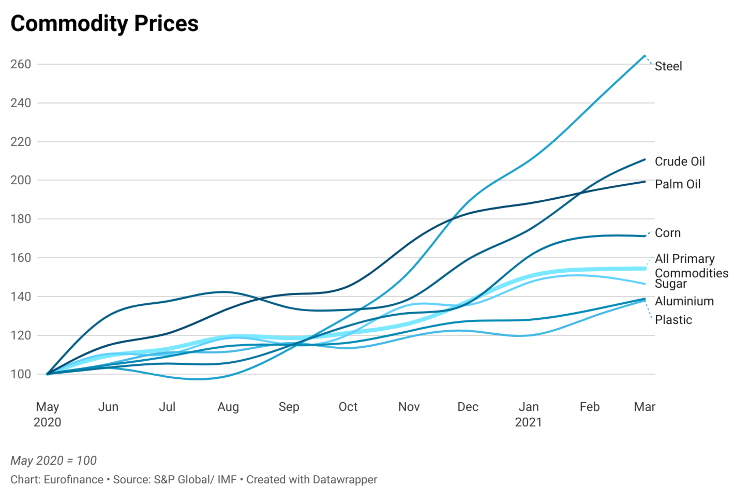
Even companies that did hedge have found that they didn’t do enough to offset cost increases. “We expect for 2021 a more significant increase in input cost, which is largely coming from dairy, cereals and packaging”, said François-Xavier Roger, CFO at Nestle on an 18th February earnings call. “That will, by itself, trigger a higher level of pricing on our side”.
Nestle, which uses green coffee, cocoa beans, cereals and grains as its key raw materials, hedges the supply with a combination of derivatives and executory contracts amounting to a notional value of CHF 917million ($974million), a mere 2.13% of its cost of goods sold (COGS) in 2020. Eurofinance expects the company to incur an additional $1.2billion for raw materials in Q1 2021 while only 11% will be covered with the gain in commodity hedges.
US beverage giant Coca Cola took a more effective approach. It increased its commodity hedging exposure by 70% in 2020 with a notional value of commodity contracts representing 10.7% of COGS in 2020 compared to 5.8% a year ago as per latest fillings.
“While we are seeing commodity prices begin to rise, given our hedge positions, we currently expect the impact on cost of goods sold to be benign.” said John Murphy, CFO at Coca Cola in the annual earnings call.
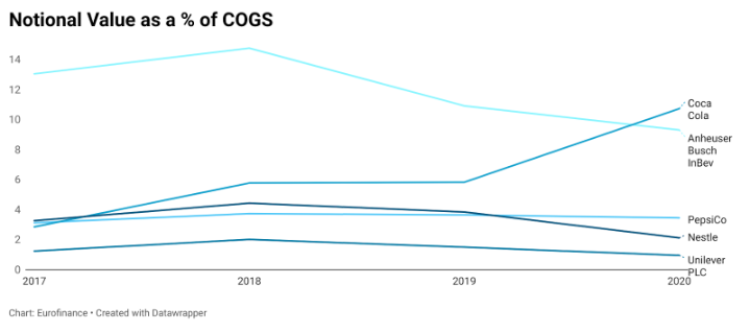
Coca Cola’s rival Pepsico’s commodity hedges remained relatively flat in 2020 at 3.46% of COGS as compared to 3.65% in 2019. However, Hugh Johnston, CFO at Pepsico said, “There is some pressure in commodities, we are viewing commodities as manageable right now. I’ll remind you that we do forward buy on areas where we can open about – typically about nine months ahead”.
Procter & Gamble, which doesn’t hedge against commodities, is expected to spend an additional $800million for raw materials in Q1 2021 assuming the volumes and mix remain consistent with the previous four quarters as per Eurofinance estimates.
“There has been a recent increase in some of our exposures, but if you were to take spot rates versus a year ago and annualize that as one evaluation of what the impact could be, it’s modest compared to some of the significant commodity spikes that we’ve been through the last decade” P&G CFO and COO Jon Moeller said on a 20 January conference call.
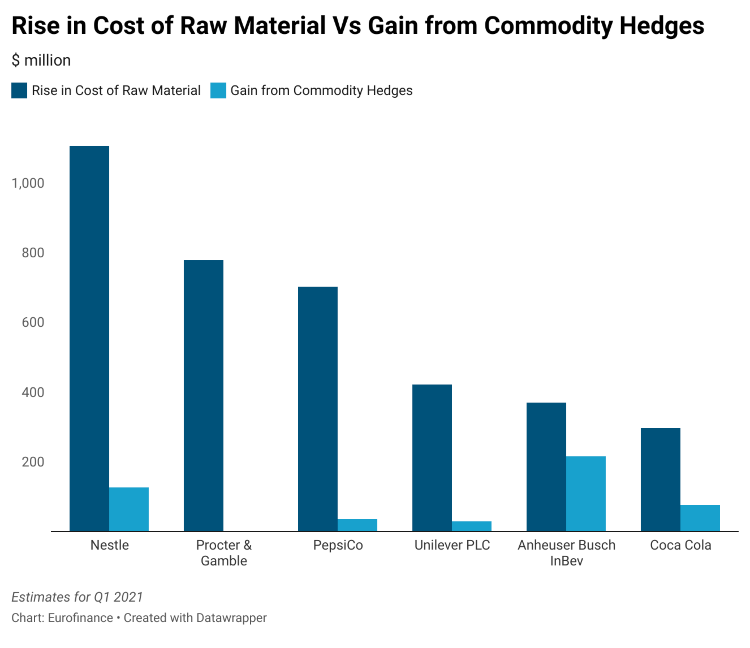
One company that is likely to be more efficient in managing price volatility is the Belgium based brewing company, Anheuser Busch InBev with 56% of the rise in cost of raw materials to be covered by commodity hedges in Q1 2021. “Due to our 12-month forward hedging policy, we have good visibility, of course, in our transactional FX and commodity exposure for the year 2021”, said Carlos Brito, CEO at Anheuser Busch InBev.
Key commodities that impact Aheuser Busch Inbev’s P&L include Corn and Barley which have rallied 12.8% and 11.4% respectively since the start of 2021.
Heineken, on the other hand, doesn’t provide the value of notional amounts of commodity hedges in its fillings but expects cumulative inflation resulting from commodities and transactional FX to be larger than the upside in topline till 2023.
“We are incurring a particular challenging period of cumulative inflation, where particularly in 2021, we will see at least double the transactional FX impact from what we saw in 2020 or the years before”, said Dolf van den Brink, CEO at Heineken.
For non-US companies with exposure to dollar-denominated commodity costs, currency risk has compounded the challenge, as the dollar index appreciated 5% against the basket of six world currencies (Euro, Swiss Franc, Japanese Yen, Canadian dollar, British pound, and Swedish Krona) since the start of 2020.
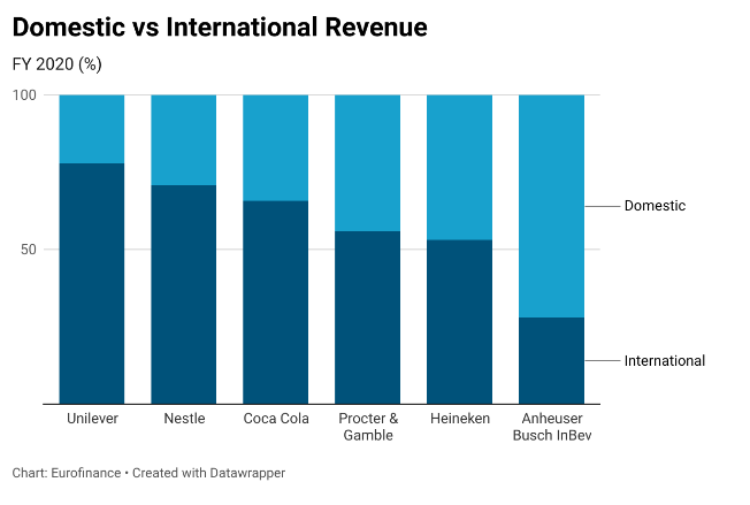
Unilever, with 78% of revenue share from international markets in 2020, recorded a £414million ($569million) decline in cash flows resulting from an impact in foreign exchange rates. This is on the back of significant reductions in foreign exchange hedges as disclosures suggested a decline of notional FX hedges from 61% in 2017 to 15.5% in 2020 as a percentage of international sales.